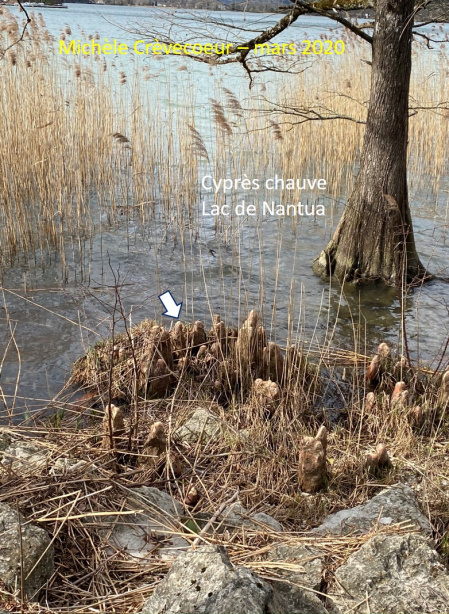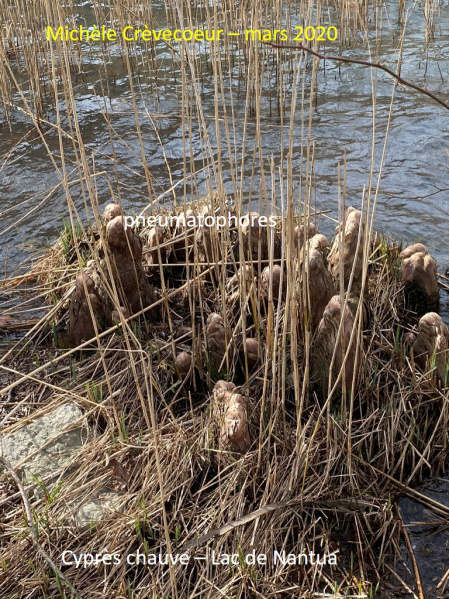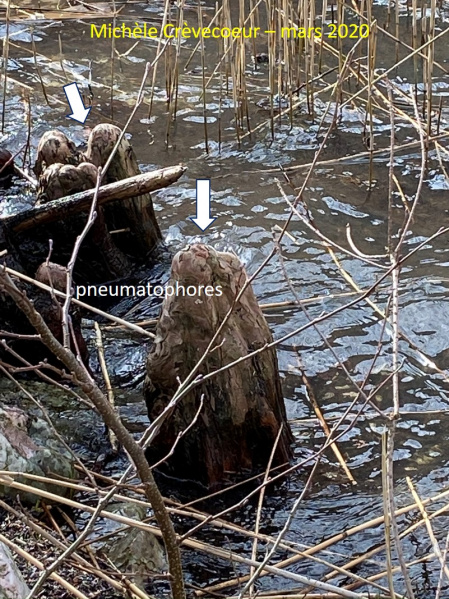Pneumatophores
Pneumatophores are specialized roots of some types of mangrove trees and other trees living in wet conditions along riverbanks and swamps whose roots are frequently immerged in water. The pneumatophores grow vertically from horizontal roots and protrude upward from the ground or water into the air. They show a negatively gravitropic growth. A well, known documented example is that of Taxodium distichum (L.) commonly called bald cypress. It belongs to Taxodiaceae family as sequoia. It is a long-lived, pyramidal conifer which grows to 30 – 50 m tall. This deciduous conifer grows on saturated and seasonally inundated soils. They are slow – growing, long – lived trees that regularly reach up to 600 years in age. Baldcypress trees are native from Maryland along the easter coast to Texas and as far west as the Mississippi valley. They are often called “Louisiana cypress” being considered as Louisiana state tree as it grows in many parts of this state particularly in swampy areas that are permanently saturated or filled with water.
To adapt to the swampy areas this tree develops pneumatophores all around the trunk which absorb oxygen via surface openings – lenticels. In addition, the pneumatophores contain tissues known as aerenchyma which has open channels filled with air. It is thought that the pneumatophores function to transport oxygen to drowned roots. In addition, they also might help to anchor the tree.
Photographs of a bald cypress with basal part of the trunk immerged in water and in the foreground pneumatophores (white arrow). Below detail of large pneumatophores immerged (white arrows on the right picture). Photographs taken at the lake Nantua – France.


